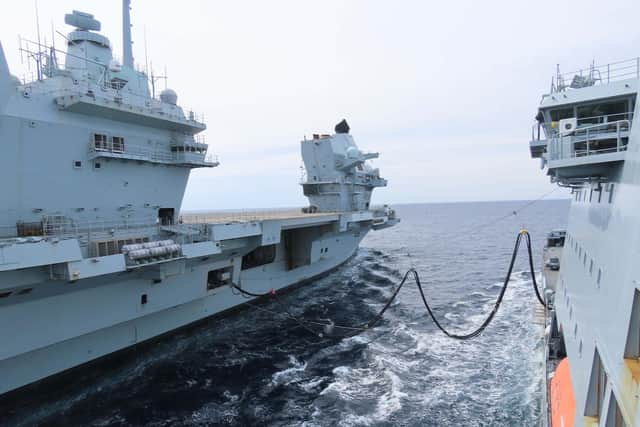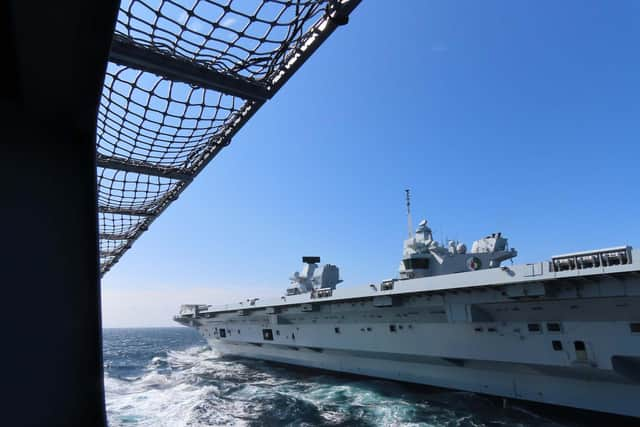HMS Queen Elizabeth: Royal Navy warship continues intense training in Whitby ahead of autumn deployment
and live on Freeview channel 276
HMS Queen Elizabeth joined fleet tanker RFA Tideforce for intense exercises in Whitby, North Yorkshire, this week. The UK flagship departed her Portsmouth home on July 10.
The two vessels – more than 100,000 tonnes of naval might and muscle – spent two days conducting replenishing at sea drills.
Advertisement
Hide AdAdvertisement
Hide AdRFS Tideforce’s Commanding Officer, Captain Pierre Wyatt RFA, said: “This period of integration in the North Sea allowed both the bridge and seamanship teams to further develop their experience of Tide and HMS Queen Elizabeth and their ability to work together ahead of future operations.” The main role of the Tide-class tanker is to provide carrier strike groups and other fleets with fuel on the go.


This allows operations to be sustained for longer and avoids the need to head into port to refuel. If a Tide-class tanker is using all her rigs and probes at maximum capacity, and sailors are operating In the right weather conditions, they can pump as much as 2,400 tonnes of fuel into the waiting tanks of HMS Queen Elizabeth in just an hour.
That is enough to fill the tanks of 43,000 family cars. Less was delivering during the drills off Whitby. The 37,000-tonne Tideforce made an abeam (sideways) approach to HMS Queen Elizabeth’s starboard side, sufficiently close together for the gunline to be fired.
It was the first step for the ships to be connected together by a jackstay and fuel line. The UK flagship received both marine diesel and aviation fuel.


Advertisement
Hide AdAdvertisement
Hide AdOnce the fuel transfer was completed before the ships separated, but continued in company overnight.
Night time flying had been planned for helicopters between the two ships, but these were cancelled due to strong winds.
Station keeping exercises were continued overnight, with the tanker required to ‘follow the leader’ on the carrier’s instructions passed between the ships by tactical radio. A second replenishment was then carried out in the morning on the carrier’s portside.
CO Wyatt added: “Conducting replenishments on both the Port and Starboard side of the Carrier allowed Tideforce’s navigation team to continue to enhance their understanding of the most effective approach and station keeping methods, which will be key to effective future operations.”